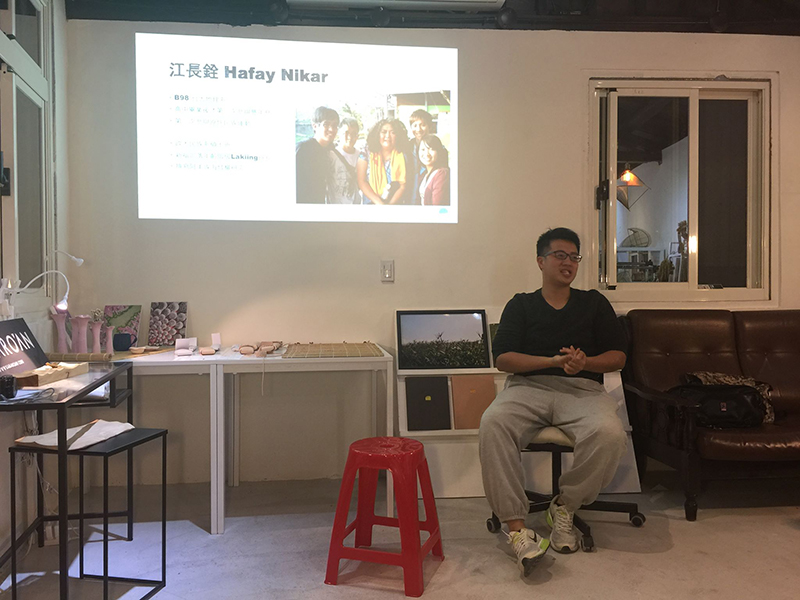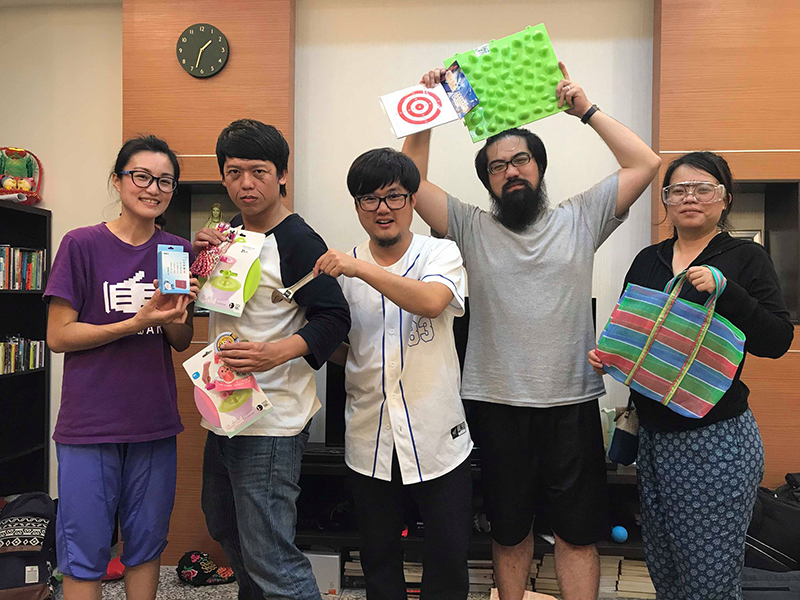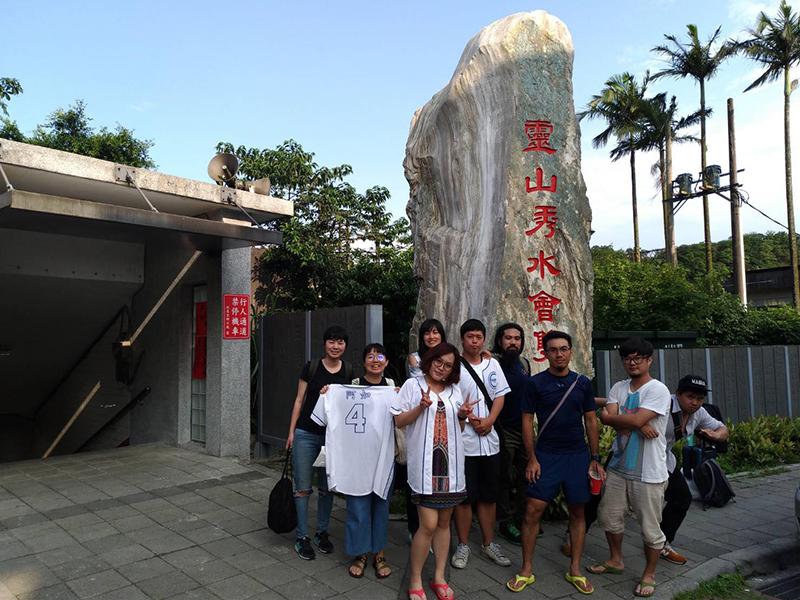Above:Lacinhan reunite at a member's wedding. They never miss out on members' big moments of life.
It seems whenever urban indigenous residents get together, they are teleported back to their old good community despite being surrounded by the concrete jungle. They can talk in their native tongue, dance with locked arms and sing at the top of their lungs without being questioned nor the need to answer to anyone. And one group of urban indigenous youths are blessed with the formation of such a bond. For the past ten years, they have been unfailingly supported by their peers whenever they need to turn to the warmth of their community. The group goes by the name of Lacinhan.
Back in 2009, a 20-year-old Pangcah young man, Daong Cenceng, spent the entire summer vacation visiting indigenous communities along the eastern coast of Taiwan and observing their ceremonies. To keep the tie formed with great gusto, he and friends set up a group named as Lacinhan on social network. “La” means where to in Pangcah and “cinhan” means financially strained in Chinese, a self-mocking name referring to their state back then. However, such a half joking start unexpectedly brought together a dozen Pangcah young people who all lived in cities in the North of Taiwan.
Besides all being indigenous urban residents, another thing they share in common is that all of them were involved in the anti-demolition movement of Xizhou Community in Xindian in 2007. Back then, Pangcah people who moved to the North of Taiwan launched a campaign against the government's demolition move. This campaign and the Indigenous Dignity movement taking place in the following year played a critical role in drawing together the concerned college indigenous young people from all over Taiwan.
Stand by Me
When I Miss Home
Urban indigenous people tend to be the minority in their social group when they grow up. Leaving home village behind for school or work inevitably makes them homesick from time to time and Lacinhan members are the ideal support for each other.
As conditions have changed overtime for urban indigenous people, it is now hard for them to follow the traditional pattern of community life, which is to engage and connect with each other through land. However, the prevalent power of internet now connects young people who live in different parts of the city. While members are all concerned about indigenous issues and actively involved in social movements, Lacinhan's gatherings in contrast focus on daily aspects of their lives with chilling out and learning as the main purposes.
Homesickness sometimes adopts the form of food yearning. Every winter, Lacinhan members would cook a pot of wine chicken soup together. Made of chicken sautéed with rice wine, the soup can bring village memories back to life for everyone. Sometimes, members would go to Xindian to buy snails from indigenous moms to make a sautéed dish. In the summer, they would go fishing together at a creek in the mountain behind the National Chengchi University. They would joyfully make a fire and roast their catch as if they are back in their community where their people chill out, chat, sing and dance.
It would not be an overstatement to say they are one family though biologically unrelated. Every lunar new year, Lacihan would throw a spring party. They would pick a member's community and spend nights there to learn the Pangcah's way of “Palafang(being a guest)” and “Papising(showing face).” Lacihan even helped one of it's members to propose during one year's spring party. Elders in the communities would be less worried about those children living in cities when they see how these young people can be such a great support for each other.
While their gatherings bring fun and joy, Lacinhan also plays a role in initiating indigenous cultural learning. “We do not speak fluent mother tongue and we also lacked the opportunity to practice it in the past.” Said Daong Cinceng. Each one of their members specializes in one indigenous cultural skill. For example, one member is very involved in learning Pangcah language so that this member turned Lacinhan into a study group of the language. They would recommend reference books for each other, work on the grammars and try to converse in their mother tongue under daily scenarios. Sometimes, they would play guitar and write a song in Pangcah language together.

The members of Lacinhan sharing their return experiences in kamaro'an.
Striving for a Common Goal:
Moving Back to the East of Taiwan
Some of Lacinhan's members came from communities in the East of Taiwan and some grew up in Northern Taiwan. One of the reasons why these group of kindred spirits can build such a strong bond over a decade is that they share one goal in common- moving to and settling in the East of Taiwan. Despite their aspiration to lead a life in the East of Taiwan, it very challenging to fully settle there due to the uncertain likelihood of their families still living there as well as the significant lack of job opportunities in indigenous communities. When the members were about to graduate and start working, the discussion topic within Lacinhan shifted to the experiences of moving back to Eastern Taiwan.
Daong Cinceng shared his own experiences. He was born and raised in Taoyuan in the North of Taiwan. Ever since his involvement in indigenous activities in college, he had regularly traveled to eastern Taiwan. He would even stay in an indigenous community for one to two months during summer and winter vacations. He knew when he was still a student that he is not going to settle down for good in northern Taiwan. He commenced his journey back home after he finished the compulsory military service. He moved back to his grandma's place in Luye Township, Taitung County and started a graduate program at National Taitung University on top of his community health building work. Now his dream is realized as he is working for Chi Mei Aboriginal Culture Museum, Ruisui Township, Hualien County.
One by one, other members also accomplished their goal of moving back to Eastern Taiwan. Some work for museums. Some started their own business like hand-crafted lighting brand. Some work as indigenous community organizers and some work as social workers. Despite being busy with their own careers, they still regularly meet up to share their bit-by-bit process of moving back to Eastern Taiwan.
“As members all hold university or higher degree, our discussion goes beyond fragmented information exchange. You can say it's very thorough.” Those who managed to move back would continue to offer advises to those who are making their plans on the skills required to find jobs in Eastern Taiwan, supporting them making plans every step of the way. Now there are about ten members who have already settled in Eastern Taiwan. As Daong Cinceng humorously put it that Lacinhan members do not have to worry about where to stay when they go on a business trip to Hualien, Taitung, places in the Coastal Range or along the East Coast.

Big holidays allow opportunities of reunion for Lacinhan. They make the most of these moments by having fun, such as gift exchange.
Next Step:
Business Integration to Unleash Greater Power
Two years ago, Tipus Hafay, the founder of Kamaro’an, invited members to her studio to exchange their career experiences in Eastern Taiwan. This accidentally triggered the third phase of Lacinhan- resource integration.
“We have known each other for so many years. Maybe we can integrate what we do because we know each person's strength.” Explained Daong Cinceng. Lacinhan members specialize in a wide range of professional fields with some overlaps. It is highly likely that they can integrate what they do to create a stronger momentum. But Daong Cinceng suddenly changed the subject by saying that though that plan of consolidating what they do is important, members are still more enthusiastic about the affair of getting married. Lacinhan members age between 25 to 32, the suitable age range to start their own families. Over the years, they have helped each other to make marriage proposals and perform as a group on members' weddings. They look forward to seeing the next generation of Lacinhan members. However, Daong Cinceng said quite shyly that given the tongue-in-cheek source of the name, he would definitely support the future generation getting a name changeover.
Much as Lacinhan is only a non-formal organization without standardized operation terms and rules, the group has managed to operate nonstop in cities for the past ten years, relying on the strength and the warmth of their bond. This group of young people stood by one another and grew together when they lived in cities. From school to work place, from being single to being married, their attachment to each other has never waned a bit. Lacinhan members aspire to become true Pangcah together.

Lacinhan members run marathon together. The share wonderful memories and form a strong bond between each other.




